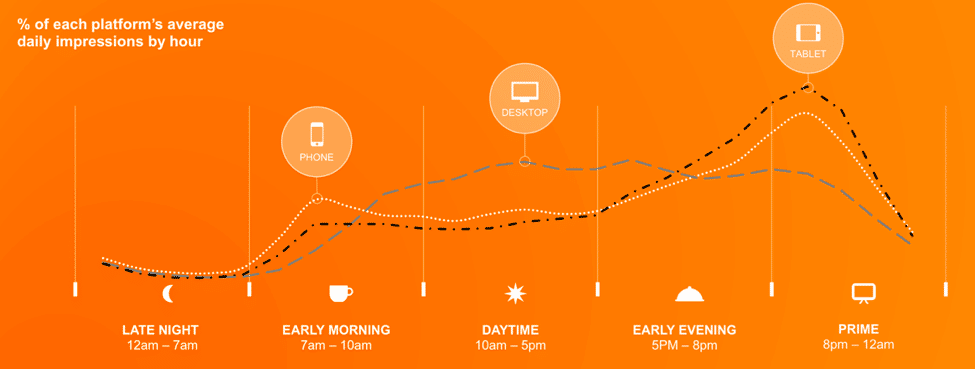The (Mobile) Medium IS the Message

It’s been over 50 years since Marshall McLuhan famously stated, “The medium is the message,” kicking off countless arguments about whether that’s true. It’s my impression that as PR people, we have a bias toward the message. But technology’s rapid evolution, especially the past few years, has dramatically impacted how we communicate, tipping the scales toward the medium.
Arguably the biggest example of this – the proliferation of mobile devices.
Increase of mobile devices
At first, smartphones were a secondary means for accessing the internet. Great for a quick check-in while you’re out and about, but definitely not the preferred way to work online. But the devices improved, networks got faster and immediacy began to trump usability.
For the first time ever last November, the majority of all internet usage was done on a mobile device, according to StatCounter.
The problem? When it comes to developing content, many PR pros still only think of how it’ll look on a desktop – often the platform used to develop it. It’s easy to see the potential issues this creates.
If your audience primarily is a mobile (or tablet) one, here are several considerations you should keep in mind when developing content.
How to write for mobile
- Write shorter copy: There isn’t any firm data specifically about ideal length of mobile copy, but suffice to say, shorter is better. Embrace the one sentence paragraphs, clear calls to action and headers and bullets that guide the eye.
- Pictures: Yes, a picture is worth a thousand words when it comes to mobile content. Report after report shows that visual online content achieves higher brand recall and engagement.
- Video: Better yet, moving If 2016 was the rise of video content, 2017 is the year it firmly entrenches itself as a content marketing necessity. Just look at these two stats from Hubspot: landing pages with a video increase conversation rates by 80 percent and 92 percent of people who watch mobile videos share them with others.
Proof copy and screen
I took a web design course in college, where the only thing I learned was that I never wanted to do web design. However, I do remember my professor saying to always open a new page on multiple browsers to look for issues and test usability. In that same vein, when you’re proofing content, test it across a desktop, smartphone and tablet. Something that seems brief and readable on a PC may look like a daunting wall of text on an iPhone.
Where should you post?
Each social platform has data showing the ideal time to post – when its users are online and most engaged. This graphic from TrackMaven does a great job identifying the best day and time to post on each of the main social platforms (not that you should only be posting once a week).

There also this data from Smart Insights detailing which type of device people use throughout the day (tl;dr version: phone=morning, desktop=daytime, tablet=evening/night).

Think through both these sets of insights together when drafting and scheduling content. Posting content to Facebook when it’s most engaged at night? Tablet. LinkedIn, when the professional world is checking in before they start their day? Smartphone.
Putting on my APR hat, this data speaks to all internet users and isn’t necessarily reflective of your audience, who may or may not share these tendencies. It’s important to do your own research – particularly which devices your audiences use most. Virtually all social platforms, along with Google Analytics, provide data regarding your audience’s use of mobile vs. desktop vs. tablet. Look at that data regularly because what’s true today isn’t necessarily true tomorrow.
Leave a Reply